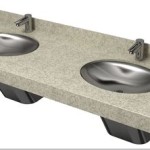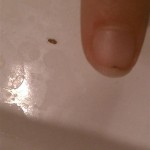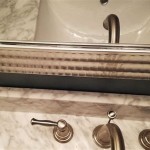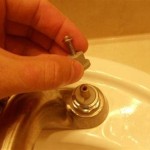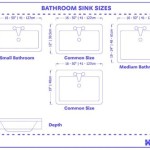Bathroom Sink Stopper Parts: Delta
Delta faucets are known for their quality and innovation in the plumbing industry. Understanding the components of a Delta bathroom sink stopper is essential for effective troubleshooting and repair. This article details the common parts found in these stoppers, their function, and potential issues that may arise.
The most prevalent type of Delta bathroom sink stopper is the pop-up stopper. This mechanism operates without a separate lever and relies on a vertical push action to open and close the drain. Key components include the stopper body, the clevis, the pivot rod, and the strap.
The stopper body is the visible part of the assembly that sits within the drain opening. It typically features a decorative finish matching the faucet and is designed to create a seal, preventing water from draining. Different stopper body designs exist, including those with a fixed rubber seal and those with a pivoting flap.
Connecting the stopper body to the operating mechanism below the sink is the clevis. This small, typically metal, component is crucial for transferring the vertical motion of the pivot rod to the stopper body. The clevis often secures to the stopper body using a screw or a spring clip. Its precise design varies depending on the specific Delta faucet model.
The pivot rod is a thin metal rod that extends from the drain assembly to the back of the faucet. One end attaches to the clevis, while the other end is connected to a linkage mechanism within the faucet body. Pushing down on the stopper body pushes the pivot rod downward, activating the linkage and closing the drain. Pulling up reverses the process, lifting the stopper and opening the drain.
The strap is a flat piece of metal that connects the pivot rod to the clevis. Its flexibility allows for the necessary movement while maintaining a secure connection. The strap is often a point of failure due to wear and tear. It can become detached, bent, or broken, leading to a malfunctioning stopper.
In addition to these primary components, the Delta pop-up stopper assembly includes several smaller parts. The pivot nut secures the pivot rod to the drain assembly. A spring clip may be used to connect the clevis and the stopper body. Washers and O-rings are incorporated throughout the assembly to ensure a watertight seal and smooth operation.
Troubleshooting a Delta bathroom sink stopper typically involves inspecting these components for damage or misalignment. A loose clevis can lead to a wobbly stopper. A disconnected strap will prevent the stopper from moving at all. A corroded or damaged pivot rod can impede smooth operation. Identifying the faulty component allows for targeted repair or replacement.
When replacing parts, choosing genuine Delta replacements is highly recommended. These parts are designed to work seamlessly with Delta faucets and ensure proper fit and function. Using generic parts can lead to compatibility issues and potentially damage the faucet.
Before attempting any repairs, it's important to shut off the water supply to the sink. This precaution prevents accidental flooding. Gathering the necessary tools beforehand, such as pliers, screwdrivers, and an adjustable wrench, streamlines the repair process.
Disassembly of the stopper assembly usually begins by removing the pivot nut from the drain assembly. This allows for the removal of the pivot rod and the attached clevis and strap. The stopper body can then be lifted out of the drain opening. Careful observation during disassembly helps in understanding the assembly process for reinstallation.
While the basic principles of the Delta pop-up stopper remain consistent, variations exist between models. Consulting the specific installation instructions for the faucet model ensures the correct procedure is followed. These instructions often include exploded diagrams that clearly illustrate the parts and their relationships.
Regular maintenance can extend the lifespan of a Delta bathroom sink stopper. Periodically cleaning the stopper body and removing any debris or hair can prevent clogs and ensure smooth operation. Inspecting the visible components for signs of wear can help identify potential issues before they become major problems.
Understanding the function and interaction of each part within the Delta bathroom sink stopper assembly empowers homeowners to address common issues effectively. Proper maintenance and timely repairs contribute to the longevity and optimal performance of the faucet. Utilizing genuine replacement parts ensures compatibility and preserves the integrity of the Delta product.

Drain Stopper Bathroom In Chrome Rp5648 Delta Faucet
Install A Drain Stopper So The Is Removable

Delta Drain Stopper For Bathroom Sinks In Champagne Broe Rp5648cz The Home Depot

Drain Stopper Bathroom In Brushed Nickel Rp5648bn Delta Faucet

Delta Rp5648ss Replacement Drain Stopper Only Build Com

Bathroom Sink Popup And Stopper Problems

Delta Bathroom Sink Pop Up Stopper In Brushed Nickel Rp5648bn The Home Depot

Sink Drains Stoppers At Com

How To Remove A Delta Bathroom Sink Pop Up Stopper Hunker

How To Remove A Delta Sink Stopper Step By
